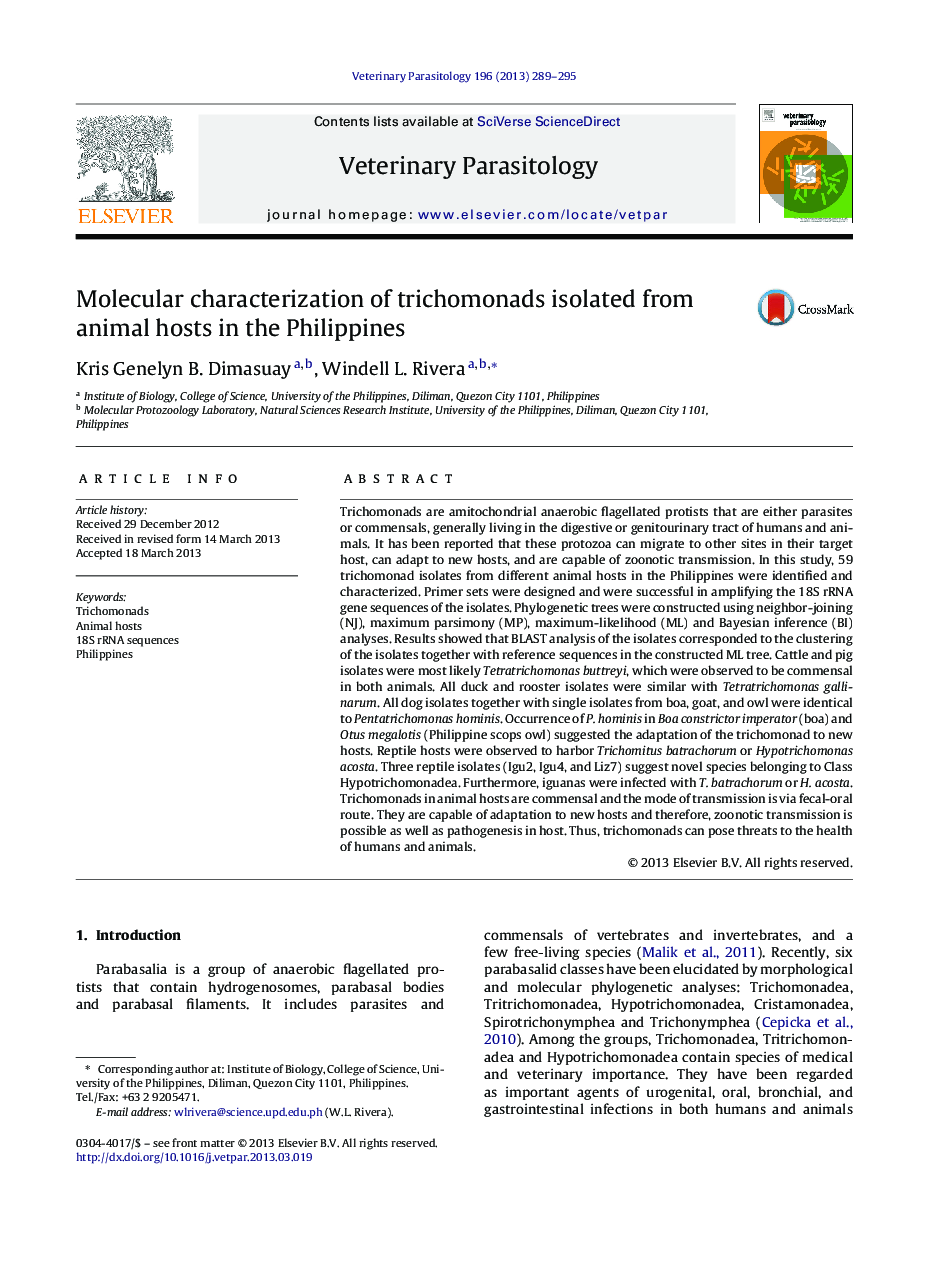| کد مقاله | کد نشریه | سال انتشار | مقاله انگلیسی | نسخه تمام متن |
|---|---|---|---|---|
| 5804149 | 1555698 | 2013 | 7 صفحه PDF | دانلود رایگان |
Trichomonads are amitochondrial anaerobic flagellated protists that are either parasites or commensals, generally living in the digestive or genitourinary tract of humans and animals. It has been reported that these protozoa can migrate to other sites in their target host, can adapt to new hosts, and are capable of zoonotic transmission. In this study, 59 trichomonad isolates from different animal hosts in the Philippines were identified and characterized. Primer sets were designed and were successful in amplifying the 18S rRNA gene sequences of the isolates. Phylogenetic trees were constructed using neighbor-joining (NJ), maximum parsimony (MP), maximum-likelihood (ML) and Bayesian inference (BI) analyses. Results showed that BLAST analysis of the isolates corresponded to the clustering of the isolates together with reference sequences in the constructed ML tree. Cattle and pig isolates were most likely Tetratrichomonas buttreyi, which were observed to be commensal in both animals. All duck and rooster isolates were similar with Tetratrichomonas gallinarum. All dog isolates together with single isolates from boa, goat, and owl were identical to Pentatrichomonas hominis. Occurrence of P. hominis in Boa constrictor imperator (boa) and Otus megalotis (Philippine scops owl) suggested the adaptation of the trichomonad to new hosts. Reptile hosts were observed to harbor Trichomitus batrachorum or Hypotrichomonas acosta. Three reptile isolates (Igu2, Igu4, and Liz7) suggest novel species belonging to Class Hypotrichomonadea. Furthermore, iguanas were infected with T. batrachorum or H. acosta. Trichomonads in animal hosts are commensal and the mode of transmission is via fecal-oral route. They are capable of adaptation to new hosts and therefore, zoonotic transmission is possible as well as pathogenesis in host. Thus, trichomonads can pose threats to the health of humans and animals.
Journal: Veterinary Parasitology - Volume 196, Issues 3â4, 23 September 2013, Pages 289-295
